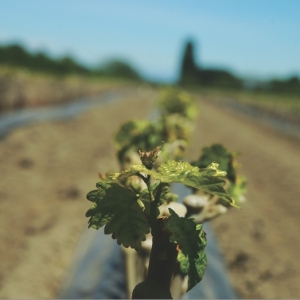Dr Mike Trought from Blenheim Plant & Food says the end result is, as always, dependent on conditions during flowering later this year.
“I predict the warm December/January (2012/13) will probably lead to higher bunch numbers per shoot than average. Inflorescence (bunch) initiation and flowering occur at approximately similar times of the year and are both affected by temperature at that time. However the consequences on flowering, occurs in the current season, the effect through inflorescence initiation and bunch number occurs the following season.
“Generally the more bunches you have per shoot, the bigger the inflorescences are. So I would predict that in December 2013 we will have more flowers per hectare than average. However, how well they come through to produce fruit will depend on what happens at flowering.”
Given Sauvignon Blanc made up 68% of this year’s total vintage any decreases or increases in this variety will heavily impact the vintage figures overall.
At the recent NZW Grape Days, Dr Damian Martin said Marlborough’s Sauvignon Blanc bunch numbers in 2014 will far surpass this year.
“We know what the temperatures were in December 12, so we can predict what we think the bunch number might be in 2014. With the December temperature of 17.9 C (at the Marlborough Research Centre) we are predicting a bunch number of 68, + or – 6. The long-term average in regional trials in four cane Sauvignon Blanc was 64, but interestingly the 2013 number was 56. So next year would be quite a step up.
“We can define this prediction by taking it to a single site, which typically has a high long-term bunch number. Instead of taking an average December temperature, we have taken the sum of the growing degree-days for an initiation period that starts about 10 days before mid-flowering finishes 20 days after mid flowering. Our prediction here is 71 bunches per vine, (+ or – 4) compared to a long-term average of 65 and the 2013 bunch number of 60. Next year we are essentially (looking at) 10% above the long-term average and 20% above 2013.”
While the 2013 Sauvignon Blanc bunch numbers appear to have been below the long-term average in Marlborough, the yields were the highest ever, at 210,000 tonnes. That’s 4000 more than the previous largest vintage back in 2011. Surprised is one way to describe how many in the region reacted to the figures.
Add the potential major increases next vintage and Marlborough alone could be producing more in 2014, than the entire country did in 2013. Which means some judicious planning is necessary moving forward.
Back in 2009 and 2010 many growers chose to drop the number of Sauvignon Blanc canes they laid down. Research showed that yields dropped by up to 56% in the first year, and evened out between 65 and 70% after three years, (when compared with Sauvignon Blanc vines that had been consistently pruned to four canes). The result, along with winery enforced yield caps helped reduce yields, although the real clincher was the 2012 vintage where poor flowering conditions impacted on the vintage overall. That low yield saw most growers go back to four canes in 2012, which Trought says can have a dramatic effect.
“Going back up to four canes, from two will see an increase in yield of 27% more than a vine that has been constantly pruned to four canes.”
So could growers realistically manage yields by once again dropping canes?
“If you went from two or three canes in 2011 up to four in 2012 and are now looking at dropping back, my guesstimate and it is only a guesstimate, is the yields will move down proportionally,” Trought says.
Laying down shorter canes may be one answer, another may be to leave four canes and if yield estimates come in too high, utilise machine thinning technology to reduce them. Heavy machine thinning can reduce yields by up to 38% while light thinning can reduce by 17%. Machine thinning removes berries from the bunch, rather than whole bunches from the vine. About 40 to 50% of the long term reduction in yield is what is knocked from the vine during thinning, the balance is a reduction in berry size and bunch/ berry shrivel in the canopy
The trials undertaken in recent years have shown machine thinning doesn’t traumatise the remaining fruit, may help to reduce botrytis infections and has no discernible impact on the composition of the resulting wines.
While no exact figure can be dialled up to be thinned, the results have been spectacular
in terms of managing over cropping.
Given the research presented at the Grape Days, this could be the most economical and timely solution if yields do blow out next year. ν
This email address is being protected from spambots. You need JavaScript enabled to view it.










